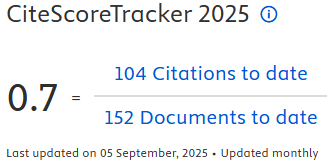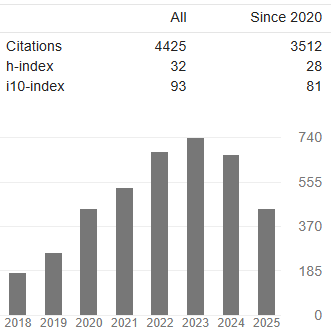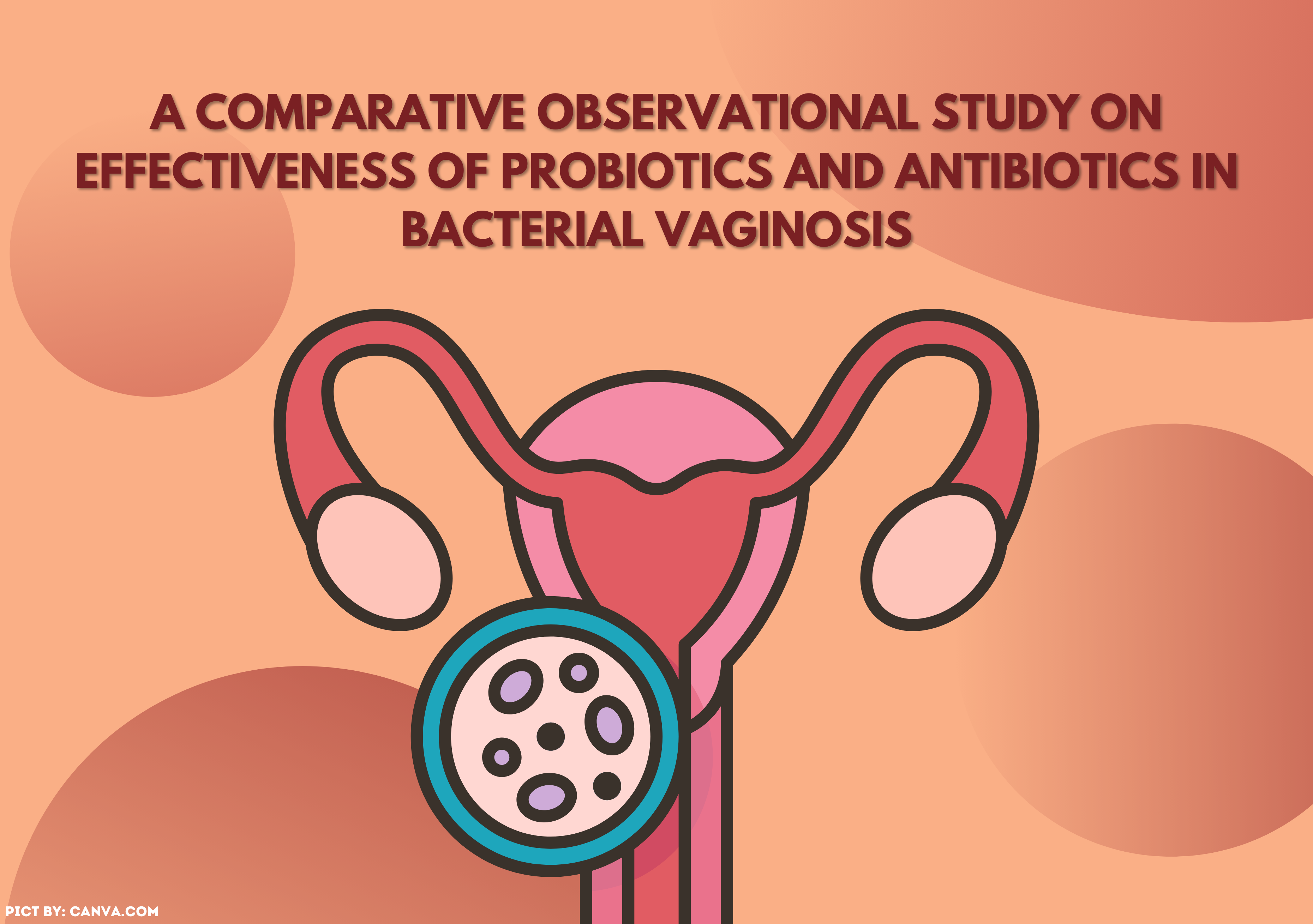THE CORRELATION BETWEEN WATER, SANITATION, AND HYGIENE WITH SOIL-TRANSMITTED HELMINTHS INFECTION AMONG ELEMENTARY SCHOOL CHILDREN OF ARU ISLANDS DISTRICT, MALUKU
Downloads
ABSTRACT
Soil-Transmitted Helminths (STH) infection is the most common intestinal parasite infection in Indonesia. STH infection can interfere with child development and cause cognitive impairment in severe cases. The school-age group is the most susceptible to STH infection because of direct contact with soil in the school yard. STH infection incidence can be avoided by adequate water, healthy latrines, and good hygiene and can be improved by proper interventions. This study aimed to analyze the correlation between Water, Sanitation, and Hygiene (WASH) with STH infection in Aru Islands District, Maluku. This study used a cross-sectional design and was conducted in Elementary Schools in Karangguli and Wokam villages, Aru Islands district, Maluku. One hundred and six stool samples were collected from both villages. The sociodemographic and WASH data were collected using the interview method. Stool samples were collected and examined for STH infection using a direct smear technique on the light microscope. Data statistical analysis was performed by the SPSS program using the Chi-square or Fischer's Exact test. The examination results showed that 73 students (68.9%) were infected with STH. The bivariate analysis showed that water source (p = 0.000002), defecation place (p = 0.002), and washing hands after defecation (p = 0.048) were all significantly correlated with STH infection. This study concluded that WASH variables which were water source, defecation place, and washing hands after defecation had a significant correlation with STH infection.
Keywords: Water, Sanitation, and Hygiene (WASH); soil-transmitted helminths infection; elementary school students.
Adriko, M., Tinkitina, B., Arinaitwe, M., Kabatereine, N.B., Nanyunja, M. and M. Tukahebwa, E., 2018. Impact of a national deworming campaign on the prevalence of soil-transmitted helminthiasis in Uganda (2004-2016): Implications for national control programs. PLOS Neglected Tropical Diseases, [online] 12(7), p.e0006520. Available at: <https://doi.org/10.1371/journal.pntd.0006520>.
Alelign, T., Degarege, A. and Erko, B., 2015. Soil-Transmitted Helminth Infections and Associated Risk Factors among Schoolchildren in Durbete Town, Northwestern Ethiopia. Journal of Parasitology Research, [online] 2015(641602). Available at: <https://doi.org/10.1155/2015/641602>.
Belyhun, Y., Medhin, G., Amberbir, A., Erko, B., Hanlon, C., Alem, A., Venn, A., Britton, J. and Davey, G., 2010. Prevalence and risk factors for soil-transmitted helminth infection in mothers and their infants in Butajira, Ethiopia: a population based study. BMC Public Health, [online] 10(1), p.21. Available at: <https://doi.org/10.1186/1471-2458-10-21>.
Central Bureau of Statistics, 2018. Persentase Penduduk Miskin September 2017 Mencapai 10,12 persen. Jakarta: Central Bureau of Statistics.
Centers for Disease Control and Prevention, 2013. Parasites. [online]
Dobo Public Health Center, 2017. Profil Puskesmas Dobo Tahun 2016. Dobo: Puskesmas Dobo.
Indonesian Ministry of Health, 2015. Laporan Akuntabilitas Kinerja Tahun 2014. Jakarta: Indonesian Ministry of Health.
Indonesian Ministry of Health, 2017a. Peraturan Menteri Kesehatan Republik Indonesia Nomor 15 Tahun 2017 Tentang Penanggulangan Cacingan. Jakarta: Indonesian Ministry of Health.
Indonesian Ministry of Health, 2017b. Profil Kesehatan Indonesia Tahun 2016. Jakarta: Indonesian Ministry of Health.
Jia, T.-W., Melville, S., Utzinger, J., King, C.H. and Zhou, X.-N., 2012. Soil-Transmitted Helminth Reinfection after Drug Treatment: A Systematic Review and Meta-Analysis. PLOS Neglected Tropical Diseases, [online] 6(5), p.e1621. Available at: <https://doi.org/10.1371/journal.pntd.0001621>.
Glendinning, L., Nausch, N., Free, A., Taylor, D.W. and Mutapi, F., 2014. The microbiota and helminths: sharing the same niche in the human host. Parasitology, [online] 141(10), pp.1255–1271. Available at:
Mardiana, M. and Djarismawati, D., 2012. Prevalensi Cacing Pada Murid Sekolah Dasar Wajib Belajar Pelayanan Gerakan Terpadu Pengentasan Kemiskinan Daerah Kumuh di Wilayah DKI Jakarta. Jurnal Ekologi Kesehatan, [online] 7(2 August).
Ojja, S., Kisaka, S., Ediau, M., Tuhebwe, D., Kisakye, A.N., Halage, A.A., Mugambe, R.K. and Mutyoba, J.N., 2018. Prevalence, intensity and factors associated with soil-transmitted helminths infections among preschool-age children in Hoima district, rural western Uganda. BMC Infectious Diseases, [online] 18(1), p.408. Available at: <https://doi.org/10.1186/s12879-018-3289-0>.
Rajoo, Y., Ambu, S., Lim, Y.A.L., Rajoo, K., Tey, S.C., Lu, C.W. and Ngui, R., 2017. Neglected Intestinal Parasites, Malnutrition and Associated Key Factors: A Population Based Cross-Sectional Study among Indigenous Communities in Sarawak, Malaysia. PLOS ONE, [online] 12(1), p.e0170174. Available at: <https://doi.org/10.1371/journal.pone.0170174>.
Samarang, Nurjana, M.A. and Sumolang, P.P.F., 2016. Prevalensi Soil Transmitted Helminth di 10 sekolah dasar Kecamatan Labuan Kabupaten Donggala Sulawesi Tengah. J Health Epidemiol Commun Dis, 2(2), pp.33–38.
Sanchez, A., Gabrie, J., Canales, M., Rueda, M., Fontecha, G., Mason, P., Bearman, G. and Stevens, M., 2016. Soil-Transmitted Helminths, Poverty, and Malnutrition in Honduran Children Living in Remote Rural Communities. Human Parasitic Diseases, [online] 8, pp.27–35. Available at: <http://dx.doi.org/10.4137/HPD.S33458>.
Sofiana, L., 2010. Hubungan Perilaku Dengan Infeksi Soil Transmitted Helminths Pada Anak Sekolah Dasar MI Asas Islam Kalibening, Salatiga. Jurnal Kesmas Universitas Ahmad Dahlan, 4(2), pp.76–143.
Staf Pengajar Departemen Parasitologi Fakultas Kedokteran Universitas Indonesia, 2006. Buku Ajar Parasitologi Kedokteran. Jakarta: Badan Penerbit Fakultas Kedokteran Universitas Indonesia.
Steinbaum, L., Mboya, J., Mahoney, R., Njenga, S.M., Null, C. and Pickering, A.J., 2019. Effect of a sanitation intervention on soil-transmitted helminth prevalence and concentration in household soil: A cluster-randomized controlled trial and risk factor analysis. PLOS Neglected Tropical Diseases, [online] 13(2), p.e0007180. Available at: <https://doi.org/10.1371/journal.pntd.0007180>.
Strunz, E.C., Addiss, D.G., Stocks, M.E., Ogden, S., Utzinger, J. and Freeman, M.C., 2014. Water, sanitation, hygiene, and soil-transmitted helminth infection: a systematic review and meta-analysis. PLoS medicine, [online] 11(3), pp.e1001620–e1001620. Available at: <https://doi.org/10.1371/journal.pmed.1001620>.
Waris, L., Rahayu, N. and Indriyati, L., 2012. Risiko Kecacingan Pada Anak Sekolah Dasar di Pedesaan Daerah Perbatasan Kabupaten Nunukan. Jurnal Biotek Medisiana Indonesia, 1(1).
Wiryadana, K.A., Putra, I.W.A.S., Rahayu, P.D.S., Pradnyana, M.M., Adelaida, M.L. and Sudarmaja, I.M., 2018. Risk factors of soil-transmitted helminth infection among elementary school students. Paediatrica Indonesiana, [online] 57(6), pp.295–302. Available at: <https://doi.org/10.14238/pi57.6.2017.295-302>.
World Health Organization, 2017. Soil-transmitted helminth infections. [online].
Worrell, C.M., Wiegand, R.E., Davis, S.M., Odero, K.O., Blackstock, A., Cuéllar, V.M., Njenga, S.M., Montgomery, J.M., Roy, S.L. and Fox, L.M., 2016. A Cross-Sectional Study of Water, Sanitation, and Hygiene-Related Risk Factors for Soil-Transmitted Helminth Infection in Urban School- and Preschool-Aged Children in Kibera, Nairobi. PloS one, [online] 11(3), pp.e0150744–e0150744. Available at: <https://doi.org/10.1371/journal.pone.0150744>.
Zerdo, Z., Yohanes, T. and Tariku, B., 2016. Soil-Transmitted Helminth Reinfection and Associated Risk Factors among School-Age Children in Chencha District, Southern Ethiopia: A Cross-Sectional Study. Journal of Parasitology Research, [online] 2016(4737891). Available at: <https://doi.org/10.1155/2016/4737891>.
- The authors agree to transfer the transfer copyright of the article to The Indonesian Journal of Public Health effective if and when the paper is accepted for publication.
- Authors and other parties are bound to the Creative Commons Attribution-NonCommercial-ShareAlike 4.0 International License for the published articles, legal formal aspect of journal publication accessibility refers to Creative Commons Attribution-NonCommercial-ShareAlike 4.0 International License (CC BY-NC-SA), implies that:
- Attribution ” You must give appropriate credit, provide a link to the license, and indicate if changes were made. You may do so in any reasonable manner, but not in any way that suggests the licensor endorses you or your use.
- NonCommercial ” You may not use the material for commercial purposes.
- ShareAlike ” If you remix, transform, or build upon the material, you must distribute your contributions under the same license as the original.































